TYHMÄLÄSSÄ EI OLE ALKEELLISIMPAANKAAN FAKTANTARKASTUKSEEN PYSTYVÄÄ VÄKEÄ
https://historianet.fi/tiede/neuvostoliitto-suunnitteli-voittamatonta-apinamiesarmeijaa
Neuvostoliitto pyrki maailmanvaltaan muun muassa lääketieteellisten kokeiden ja lajien risteyttämisen avulla.
10. oktober 2018 av Therese Boisen Haas
Neuvostoliitto suunnitteli voittamatonta apinamiesarmeijaa
Pohjoisnavan sulattaminen valtavan padon avulla,vanhuuden voittaminen nuorella verellä ja apinamiesten armeija ovat vain muutamia esimerkkejä Neuvostoliitossa keksityistä villeistä ideoista,joissa tiede piti valjastaa valtion palvelukseen."
HM: Apinajuttu perustuu tämän englanninkielisen Wikin lainaaman lähteen mukaan science-fiction-kirjailija, kemian tohtori Jeremei Judovich Parnovin jutuille ja hänen jostakin muka löytämälleen ”anomukselle” neuvostohallitukselle ”tutkimusprojektista” . Fiktio on harsittu kokoon käyttäen mm. erästä löysästi todenperäistä tapausta, joka tapahtui Ranskassa.
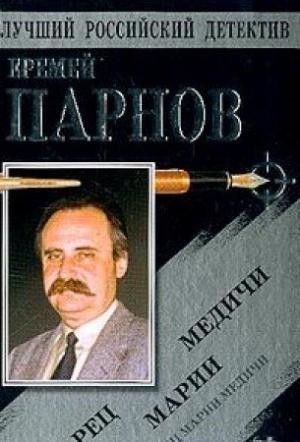
Lännessäkin tunnettu kriitikoiden ja nuorten lukijoiden tykkäämä SCIFIkirjailija šš World Soul
French Edition by
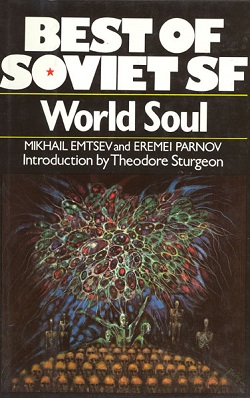
Supersotilas: Uusi laji voittaisi ihmiset ja jopa jumalat
Vuonna 1925 Stalin käski maan tiedeakatemian tutkijoita ottamaan yhteyttä biologiin nimeltä Ilja Ivanovitš Ivanov, sillä hän uskoi tämän voivan luoda Neuvostoliitolle mutanttiarmeijan, jonka supersotilaat noudattaisivat mukisematta käskyjä eivätkä tuntisi kipua.
Kansainvälisesti tunnustettu lisääntymisbiologi Ivanov oli 15 vuotta aiemmin esitellyt luonnontieteellisessä kongressissa ajatuksen siitä, että risteyttämällä apina ja ihminen voitaisiin luoda uusi vahva laji.
Stalin uskoi, että tällaisista apinaihmisistä koottu armeija saisi muut maailman maat vapisemaan pelosta ja tunnustamaan Neuvostoliiton ylivertaisuuden.
Uusi laji veisi Stalinin mielestä myös pohjan pois kaikilta uskonnoilta, sillä se todistaisi, että ihminen – eikä mikään jumala – pystyi luomaan aivan uusia lajeja.
Vuonna 1926 Neuvostoliiton johto rahoitti Ivanovin tutkimusmatkaa Länsi-Afrikkaan, missä hän yritti hedelmöittää kolmea simpanssinaarasta ihmisen sukusoluilla.
Kokeen epäonnistuttua hän palasi Neuvostoliittoon mukanaan noin 15 apinaa ja perusti tutkimuskeskuksen Suhumiin Georgiaan.
Siellä naarasapinat kuolivat pian, jolloin useat neuvostoliittolaiset naiset tarjoutuivat vapaaehtoisesti hedelmöitettäviksi apinan sukusoluilla, jotta he saisivat kunnian synnyttää ensimmäiset ”uudet ihmiset”.
Ennen kokeen alkamista viimeinenkin apina, Tarzan-niminen oranki, kuitenkin kuoli vuonna 1929.
Epäonnistuminen ajoi Ivanovin epäsuosioon kommunistipuolueessa. Kokeet lopetettiin ja Ivanov joutui Siperiaan vuonna 1930. Hän kuoli vuonna 1932. "
Valetta ja hölynpölyä.
Kaikki osumat Googlella ”ihmisen riteyttämisestä” ja keinosiemennyksen keksijä ja käyttönottaja Ilja Ivanovits Ivanovista (1870 – 1932) vievät virolaiseen huumorikirjallisuuteen. "
Risto Koivula
Kommenttisi odottaa hyväksyntää.
Valetta ja hölynpölyä.
Kaikki linkit ”ihmisen riteyttämiseen” ja keinosiemeenyksen keksijä ja käyttäänottaja Ilja Ivanovits Ivanoviin (1870 – 1932) ovat virolaiseen huumorikirjallisuuteen.
https://encyclopedia2.thefreedictionary.com/Ivanov%2c+Ilia
” Ivanov, Il’ia Ivanovich
Born July 20 (Aug. 1), 1870, in the city of Shchigry, in present-day Kursk Oblast. Died Mar. 20, 1932, in Alma-Ata. Soviet biologist and professor (1907).
Ivanov graduated from the University of Kharkov in 1896.He worked at the State In-stitute of Experimental Veterinary Science (1917–21, 1924–30), the Central Experi-mental Station on Questions of the Reproduction of Domestic Animals (1920 - 24), the Moscow Higher Zootechnical Institute (1928–30), and the Kazakh Veterinary and Zootechnical Institute (1931–32).He initiated the study of the problems of the biology of the propagation of farm animals and worked out a zootechnical method of artificial insemination,which was improved by his school and is used widely in animal hus-bandry in the USSR.He recommended the use of interspecific hybridization in animal husbandry to breed new strains.
WORKS
Izbrannye trudy. Moscow, 1970.
REFERENCE
Skatkin, P. N. Il’ia Ivanovich Ivanov — vydaiushchiisia biolog. Moscow, 1964. ”
Ivanovilla ei ollut tekemistä ihmisten ”jalostamisen” kanssa, hän lienee ollut ennen kaikkea armeijan hevosjalostaja, varsinkin tsaarinaikaan.
Vuonna 1922 tehdystä kokeesta, voisiko simpanssinaaras hedelmöittyä ihmisen spermasta NL:n johto ei luultavasti tiennyt mitään. Se oli tutkimua, joka oli aloitettu tsaarin aikana ja Afrikassa, jossa vapaaehtoisia ei löytynyt sellaisiin kokeisiin. Siksi-pä tohtorit keksivät tuoda vallankumouksen jälkeen pari simpanssia NL:on, jossa ei ehkä olisi täysin kireäpipoista.
Иванов, Илья Иванович (биолог)
Vuonna 1929 hän sai jostakin orankin, joka kuitenkin kuoli, ennen kuin kokeita päästiin tekemään.
Tästä oli televisiossakin jokin törkyjuttu.
http://keskustelu.skepsis.fi/Message/FlatMessageIndex/340215?page=1#340215
” Pavlovin.verihurtta
19.08.2011 00:03:35
340215
Historiaa: Neuvostoliiton ihmiskokeet (YLE)
Tällainen dokkari tuli YLE:ltä jokunen päivä sitten. Dokkarissa käydään läpi, miten NL:ssä harjoitettiin alkuaikoina fasistista ”Keeni-tiedettä”, ja miten pavlovismista loppujen lopuksi tuli NL:n ”virallinen totuus”:
http://areena.yle.fi/ohjelma/1414437
http://tv1.yle.fi/juttuarkisto/dokumentit/historiaa-neuvostoliiton-ihmiskokeet
”Venäjän vallankumouksen jälkeen neuvostohallituksella oli kovat paineet. Takapa-juinen maa oli monessa asiassa kilpailijoitaan jäljessä juuri, kun se olisi halunnut näyttää maailmalle tietä uuteen teknologiseen aikakauteen.
Biologia, tiede ja tekniikka tuntuivat vastaukselta kaikkiin ongelmiin, mutta uskottiin myös, että vanhassa kapitalistisessa maassa kasvanut kansa ei yksin riittäisi toteuttamaan muutosta, vaan tarvittiin uudenlaisia ihmisiä.
Näin ihmiskehostakin tuli vallankumouksen näyttämö 1920-luvulla. Maan laboratorioissa tehtiin salaisia kokeita uuden superrodun kehittämiseksi.
Ihmisiä ja apinoita risteytettiin, jotta saataisiin rotu, jota voitaisiin käyttää raskaaseen tai vaaralliseen työhön. Naisia hedelmöitettiin älykkäiden vallankumousjohtajien spermalla. Vanhojen ihmisten verta siirrettiin nuorempiin ja päinvastoin.
Vaikka kokeilu epäonnistui, Neuvostoliiton miljoonat kansalaiset joutuivat sopeuttamaan elämäänsä valtion asettamiin normeihin.
Tuotanto: ARTE, Lichtfilm, Mirumir, MDR.”
Ketonen
19.08.2011 00:03:44
340224
Kokeita lienee tehdy yhdysvalloissakin.

https://i.telegraph.co.uk/multimedia/archive/01016/bush-expression_1016531i.jpg
Risto Koivula
Re: Historiaa: Neuvostoliiton ihmiskokeet (YLE): asiapuoli vähissä…
http://keskustelu.skepsis.fi/Message/FlatMessageIndex/340215?page=1#340302
Pavlovin verihurtta
” >RK kirjoitti 19.08.2011 (340238)…
>>Pavlovin.verihurtta kirjoitti 19.08. 2011 (340215)…
>>>Tällainen dokkari tuli YLE:ltä
>>jokunen päivä sitten. Dokkarissa
>>käydään läpi, miten NL:ssä
>>harjoitettiin alkuaikoina fasistista
>>”Keeni-tiedettä”, ja miten
>>pavlovismista loppujen lopuksi tuli
>>NL:n ”virallinen totuus”:
Väitätkö, että Pavlovilla olisi ollut jotakin erityistä GEENEJÄ VASTAAN?
>>Asiapuoli rajoittui tähän, jossa
>neuvostoliiton hallintojärjestelmä
>selviytyi hyvin:
>http://keskustelu.skepsis.fi/html/KeskusteluViesti.asp?ViestiID=317886
>>Loppuoli tsaarin ajalta periytyviä
>yksityisiä skitsoiluja, ja sellaista,
>mitä EI tullut, vaikka joku ehdotti,
>kuten tiedemiesten ym. spermapankkia.
>Lysenkolaisuudesta tuossa dokkarissa ei yllättäen puhuttu sitten mitään.
Senkö helvettiä SILLÄ oli ihmistieteiden kanssa tekemistä??!! Ei niin yhtään mitään!
>Pavlovista puolestaan tuli kuolemansa jälkeen (osittain sitä ennenkin) NL:n tieteen ”ikoni”, mistä kertoo esim. seuraava:
Olet hyvä löytämään netistä materiaaleja!
Hänen oppinsa oli Leninin asetuksella NL:N LAISSAKIN, ainoana erityistieteenalana (että sen kaikinpuoliset toimintaedellytykset on turvattava):
http://www.marxists.org/archive/lenin/works/1921/jan/24.htm
Silloin, kun puhutaan LENINISMISTÄ, puhutaan AINA myös PAVLOVISMISTA.
(Lenin oli jossakin määrin jopa pavlovistisempi kuin Pavlov itse.)
>ht tp://en.wikipedia.org/wiki/Pavlovian_session
>”Pavlovian session
>The Pavlovian session was the joint session of the USSR Academy of Sciences and the USSR Academy of Medical Sciences held on June 28-July 4,1950.[1] The session was organized by the Soviet Government headed by Joseph Stalin in order to fight Western influences in Russian physiological sciences. During the session, a number of Pavlov’s former students attacked another group of his students (L. A. Or-beli, P.K. Anokhin, A.D. Speransky, I.S. Beritashvili) whom they accused of deviating from Pavlov’s teaching.
Tässä on nyt ihan puhdasta paskaa, jonka väärennöksen takana arvelen olevan ”iacobonilaisten peilisolujen” kannattajat, joille INSRUMENTAALINEN (OPERANDINEN) EHDOLLINEN REFLEKSI on maailman karmaisevin kirosana:
http://www.vapaa-ajattelijat.fi/keskustelu/read.php?3,14549,18798#msg-18798
Se, mitä mm. Fieldsin tutkimukset tukevat on nimenomaan ”SESSION PAVLOVISMI”, johon liittyy myös symbolirakenteinen pavlovin 2. signaalisysteemi.
RK
21.08.2011 00:05:03
340303
Re: Historiaa: Neuvostoliiton ihmiskokeet (YLE): asiapuoli vähissä…
Pavlovin.verihurtta kirjoitti 20.08.2011 (340290)…
>RK kirjoitti 19.08.2011 (340238)…
>>Pavlovin.verihurtta kirjoitti 19.08.
>>2011 (340215)…
>”Pavlovian session
>The Pavlovian session was the joint session of the USSR Academy of Sciences and the USSR Academy of Medical Sciences held on June 28-July 4, 1950. [1] The session was organized by the Soviet Government headed by Joseph Stalin in order to fight Western influences in Russian physiological sciences. During the session, a number of Pavlov’s former students attacked another group of his students (L.A. Orbeli, P.K. Anokhin, A.D. Speransky, I.S. Beritashvili) whom they accused of deviating from Pavlov’s teaching.
Tässä on nyt ihan puhdasta paskaa, jonka väärennöksen takana arvelen olevan ”iacobonilaisten peilisolujen” kannattajat, joille INSRUMENTAALINEN (OPERANDINEN) EHDOLLINEN REFLEKSI on maailman karmaisevin kirosana:
Se, mitä mm. Fieldsin tutkimukset tukevat on nimenomaan ”SESSION PAVLOVISMI”, johon liittyy myös symbolirakenteinen pavlovin 2. signaalisysteemi.
Esimerkiksi Puna-armeijan Sotilaskirurgisen tukimuslaitoksen johtajasta, psyykkisten toimintojen lokalisaation tutkija Pjotr Kuzmitš Anohinista on Sovjetskaja entsiklopejassa pelkää kehua. Samoinpsykologian titeosanakirjassa:
http://encyclopedia2.thefreedictionary.com/Anokhin%2c+Petr+Kuzmich
Ihan samaa voi sanoa hyvin samanlaisen taustan omaavan Kirovin sotilaslääketie-deakatemian (joka tutki muun ohella myös avaruus-, ilmailu ja sukelluslääketiedettä) johtajasta, Setšenov-instutuuin perustajasta lääkintäkenraaliluutnantti Levon Abgarovitš Orbelista:
http://encyclopedia2.thefreedictionary.com/Orbeli%2c+Leon+Abgarovich
>As the result of this session, Soviet physiology self excluded itself from the international scientific community for many years.[2][3]
Aleksei Dmitrijevitš Speranski topimi Pavlovin assistenttina tämän kirjoittaessa ”ehdollisia refleksejä” ja sitten Tiedeakateimia neurokirurgian laitoksen johtajana.
http://encyclopedia2.thefreedictionary.com/Speranskii%2c+Aleksei+Dmitrievich
Vuonna 1985 101-vuotiaana kuollut Ivan Solominovitš Beritašvili oli Pavlovin työto-veri jo Tsaarin aikaan, nimitettiin Tbilisin yliopiston neurofysiologian ja -patologian-professoriksi 1919 ja vuodesta 1945ko. Akatemian lääketieteen johtajaksi. En ole ennen kuullut, että hätä vastaan olisi ollut jotkin huomauttamista.
…
Consequence
In 1982, M.G. Yaroshevsky, criticizing the Pavlovian session,
Herra Jaroševskysta sen sijaan tieteelliset lähteet tai Wikikään eivät ole kuulleet mitään.
[HM:. Korjaus: kyllä henetsä löytyy,hän oli mm. Suomessakin laajasti tunnetun (ja hyvän) Petrovskin Yleisen psykologian yksi kirjoittaja.]
wrote that,in fact,Ivanov-Smolensky and his disciples did nothing but pervert the ker-nel of Pavlovian teaching, substituting for it a mechanistic view of the brain activity. [10]: 42 These so-called scholars of Pavlov emasculated the ground of his theory and extremely damaged the prospects of Soviet science. [10]: 42
Sen sijaan Anatoli Georgijevitš Ivanov-Smolenskia pidetään INSTRUMENTAALIS-TEN ELI OPERANTTISTEN EHDOOLISTEN REFLEKSIEN ensimmäisenä kokeel-lisena toteennäyttäjänä jo vuonna 1927, 10 vuotta ennen B.F.Skinneriä, ja 5 vuotta ennen Pavlovin 2. signaalisysteemiä.
Hänen asemansa psykologiankehityksessä on jossakin määrin avoin,ja hän on niitä, jotka sattavat paukahtaa uusissa muutoksissa ”kaapin päältä” tarkoin tutkituiksi ”elä-viksi” auktoriteeteiksi.Hänellä oli eräitä poikeuksellisia näkökantoja:hän puolusti kan- taa, erityisesti keskustelussa Pavlovin teorian roolista 2. maailmansodan jälleen, että ihmisen psyykkisiä ilmiöitä aivoissa ei voida lainkaan tutkia luonnontieteellisin mene-telmin. Tämä ei ole kuitenkaan aivan sam kun Skinnerin kanta,koska hän ei kiistänyt YHTEIKUNTATIETEILTÄ tieteellisyyttä, kuten (ääri)positivistit.
Hän puolusti lapsen kehityksessä Skinneriä muistuttava ”verbaalisten reaktioiden vaihetta”, josta lopputuloksena kuitenkin oli (tavallisesti!) tietoinen ajattelu ja tajunta.
hän suhtautui vakavasti temperamenttiteoriaan ja katsoi ehdollistumisjärjstelmän pa-rametreillä olevan diskreetti tai liukuva jakautuma hän tutki jo 50- ja 60-luvulla äärim-mäisen epäpopulaaria aihetta: ympäristö(myrkkyje)n ja muuttuneiden elintapojen mahdollisia vaikutuksia korkeimpiin aivotoimintoihin ja niiden koneistoon.
Häntä pidetiin ”psyykkisesti tappelunhakuisena” henkilönä (minkä ei tarvinnut välttämättä pitää paikkaansa).
http://www.ncbi.nlm.nih.gov/pubmed/7948469
” Ivanov-Smolensky conditioning: relationship between CR and UR form and intensity.
Tarpy RM, Scharer JB.
Source
Department of Psychology, Bucknell University, Lewisburg, PA 17837.
Abstract
The Ivanov-Smolensky conditioning procedure involves a CS followed by a com-mand (US). There are two URs – an instructed UR and a reflexive UR such as an au-tonomic reaction. Anticipatory responses during the CS, of either the instructed or ref-lexive UR,provide a measure of conditioning. We examined whether the reflexive CR and UR are similar in form,and whether larger reflexive CRs and URs are asso-ciated with larger instructed URs. Subjects were asked to exhale ”quickly and power-fully” (exhalation was thus the instructed UR) either following (Forward) or prior to (Back-ward) a light CS;a change in heart rate to the CS (reflexive CR) alone was the index of conditioning. The heart rate CR and UR were both deceleratory in nature, although the onset of the CR was faster than the UR. In addition, Backward-condi-tioned sub-jects demonstrated some degree of inhibitory control by the CS. Finally, the CR intensity was inversely related to exhalation magnitude. ”
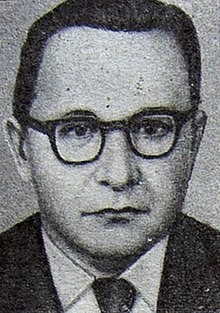
Anatoli Grigorijevitsh Ivanov-Smolenski, instrumentaalisten ehdollisten refleksien to-distaja, joille-kuille "Stalinin hurtta", Skinner vulgarisoi hänen teoriaansa. Riiteli ehdol-listen refleksien bioke-miallis-fysikaalisen mekanismin esittäjän Ivan Solomonovitsh Beritashvilin kanssa siitä,onko klassisilla ja instrumentaalisilla ehdollisilla reflekseillä sama vai eri mekanismi. Beritashvili tarjosi aksonien myelinisoitumis (klassiset) ja synaptista (instrumentaaliset/operantit). Todellisuudessa niitä tarvitaan molempia molemmissa.
” IVANOV-SMOLENSKY AND OPERANT CONDITIONING:
AN HISTORICAL NOTE
PAUL TOUCHETTE1
EUNICE KENNEDY SHRIVER CENTER
”The operant method has been popularized by Skinner and his stuzdents, but the initial systematic studies of operant conditioning with children were conducted by Ivanov-Smolensky.”
-H. W. STEVENSON (1970)2
This statement was inspired by a 1927 article in Brain, a British journal of neurology. 3 Recent findings have rekindled interest inwhether certain behaviors are products of stimulus-response, stimulus-reinforcer or response-reinforcer dependencies. The discourse was initiated by Skinner in 1937, when he identified a functional response class called ”operant” in his Reply to Konorski and Miller. The article reprinted below predates that conceptual breakthrough by 10 years . . . and it shows.
Ivanov-Smolensky considered the differences between his teclhnique and that of his colleague, Pavlov, inconsequential. Skinnerwould, in 1938, point out and clarify the importance of the difference for all time in ”The Behavior of Organisms”. Ivanov-Smolensky had made a food reinforcer contingent in order to maintain responding, establish discriminations, and allow generalization testing. Today, the analysis of the variables that account for these phenomena is still to be completed.
Anatoly Grigorievitch Ivanov-Smolensky described his apparatus and procedures in several publications circa 1927. They have been used to study the behavior of nor-mal and damaged children in the U.S.S.R. ever since. The simple elegance of the technique makes one wonder why it was not widely adopted outside of the Soviet Union. More than likely, the article was overshadowed by the appearance, in the same year, of Anrep’s translation of Pavlov’s collected studies.
ON THE METHODS OF EXAMINING THE CONDITIONED FOOD REFLEXES IN CHILDREN AND IN MENTAL DISORDERS
By A. G. IVANOV-SMOLENSKY, M.D.
Lecturer on Psychiatry in the Military Medical Academy and Professor in the Hertzen Institute, Leningrad.
The work on ”Conditioned Food Reflexes in Children” was begun in Russia twenty years ago by N. I. Krasnogorsky, one of Professor Pavlov’s pupils.
Krasnogorsky studied the conditioned motor reflexes in the form of opening the mouth and swallowing after associating different optic, acoustic and skin signals with feeding. He mainly examined small children. Lately,Miss E.Mateer, an American, has made use of Krasnogorsky’s method on a great number of children. In the course of the last two years the following methods for the study of conditioned motor reflexes in children, aged 5 to 12, have been applied in my laboratory at the Hertzen Pedago-gical Institute,and also at the Military Medical Academy:- Through a wall of the expe- rimental room a sloping metal tube is constructed (length 55 cm., diameter 3 cm.), NN’ (fig. 1).
On the side of the experimentater the slide is closed by a simple photographic shut-ter which is connected: (1) with a signal (D); and (2) with a rubber bulb (R). By pres-sing this bulb the experimentater opens the upper aperture (a) of the tube NN’; at the same time the shutter puts the signal into action, and thus the moment of opening can be registered on the kymograph.
In front of the opening there is a small sloping shelf (L) on which the experimentater places a piece of chocolate. When the shutter opens the chocolate falls into the tube and quickly moves to the lower opening (a’). Here also there is a photographic shutter which is opened by a rubber bulb (R’); the latter is held by the person being examined; it is connected not only with the shutter but also with a Marey tambour (M), and when the person being examined presses the bulb to open the shutter that movement is registered on the kymograph by a manometer, or by a special apparatus which indicates the force of the motor reflex of the hand.
The upper wall of the metal tube in its lower third has a glass plate (V), allowing the person that is being examined to see the moving chocolate. In front of the lower opening of that slide there is a metal saucer, upon which the chocolate falls when the shutter is opened.
Fig. 1 is a drawing of this apparatus.
The experiment is made in the following way:The child sits in front of the lower shut-ter of the apparatus in such a manner that he faces the glass part of the tube with the rubber bulb (R’) in his hand. While the chocolate is moving in the tube past the glass (V), the experimentater presses the child’s hand and thus also the bulb held in his hand. Having done so several times he succeeds in teaching the child to press the bulb every time he sees the chocolate in the tube.The chocolate when it falls into the saucer is at the disposal of the child and the latter eats it at once. When the child has become accustomed to deal with the apparatus, the experimentater begins to form the grasping conditioned reflex (as squeezing) to a bell, to the lighting of an electric lamp, to some tactile stimulation, &c.For instance,after having started the ringing of an electric bell, two or three seconds later he adds a food stimulus to the sounding of the bell by opening the upper shutter and allowing the chocolate to slide down, which the child receives by opening the lower lock.After several times ringing the bell and giving food simultaneously,a motor reaction (pressing on the bulb) is no- ticed in response to the sounding of the bell,i.e.,a conditioned motor reflex has been formed. The latent period of the seizing reflex is measured eitlher by means of a stopwatch, or when a kymograph can be applied by means of a Jaquet chronograph.
The intensity of the conditioned reflex (the force applied by the child in squeezing the bulb) is registered in the above-mentioned way by a manometer, or by means of a Marey drum and a kymograph.The conditioned signal and the feeding are registered by a Deprez signalizer. Records of conditioned (bell) and unconditioned (food) refle-xes with the responsive reactions of the child are found in the following diagram (see fig. 2).
The intervals between the single stimuli (bell, feeding) were varied in duration from 0.25 to 2 minutes.
If, after having established a conditioned reflex, we apply several times the condi-tioned stimulus (bell) without feeding, the latent period begins to increase gradually, the intensity of the reflex (i.e.,the force of pressure on the bulb) decreases and finally the reflex disappears,i.e.,the conditioned reflex is extinguished.When the conditio-ned reflex to bell A had been formed, we generally, in consequence of the process of generalization, obtained same reaction to otlher bells: B,C,D. If every time while fee- ding with bell A we applied from time to time bell B,always without accompanying the latter by feeding,we soon attained differentiation: A produced a conditioned reflex, while B destroyed it, i.e., an inhibitory effect was produced (a negative or inhibitory conditioned reflex).
If we combined every time the sounding of an electric bell with feeding, while a com-bination of that bell with the switching on of an electric light was not accompanied by a gift of chocolate, we transformed the electric lamp into a conditioned inhibitor; at the same time the bell ceased to produce a reaction.
By continuing to sound the bell for ten to fifteen seconds (instead of two to four seconds) thie reaction was retarded and the conditioned reflex appeared only by the eighth or fourteenth second.
Thus we can study all four kinds inhibition in children: the extinguishing, the differen-tiating, the conditioned and the retarded inhibition. If we introduced different external stimulations while a certain conditioned stimulation was acting, we could observe conditioned inhibition.
Experiments lhave been performed in my laboratory (Novikova, Fadeeva, Hackel, Ronczievsky and Aksenov) on the highest nervous activity of children, aged from 6 to 12 years, and on the speed and durability of forming the positive and inhibitory conditioned reflexes (i.e., on differentiating, on conditioned inhibition and on delayed reflexes).
These experiments have proved that we can distinguish three groups of children:
(a) children with a healthy nervous activity in whom positive and inhibitory conditioned reflexes are formed quickly and remain stable;
(b) children with feeble internal inhibition, i.e.,those in whom nervous irritation is predominant;
(c) children in whom cortical inhibition is more prominent than irritation (Novikova, Bronstein, Hackel).
At present we are investigating the functional value of the cerebral hemispheres, and the peculiarities of age and type of the nervous activity of children aged from 5 to 15 years. We are now successfully applying the methods described above, as has been proved by experiments, in examining the conditioned re flexes of some categories of individuals in imbecility, mental debility, schizophrenia and general paralysis. Thus by means of the method here described we can examine the grasping conditioned reflex, which is a reaction of apparently great biological importance.
…
1 Reprints may be obtained from Paul Touchette, Eunice Kennedy Shriver Center, 200 Trapelo Road, Waltham, Massachusetts 02154.
2 Stevenson, H. W. Learning in Children. In P. H. 2Stevenson, H. W. Learning in Children. In P. H. Mussen (Ed), Carmichael’s manual of child psychology, Vol. I. 3rd ed.; New York: John Wiley & Son s, 1970. Pp. in which the person to be examined is placed,856.
3 Reprinted here with the permission of Oxford University Press.
…
Beljajev oli klassinen darvinistinen tutkija, joka kohtasi uransa aluksi melkoista vastustusta.



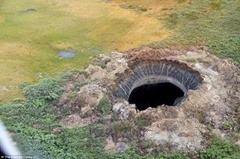




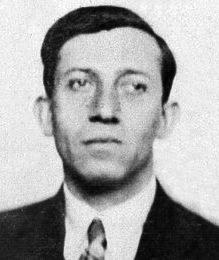
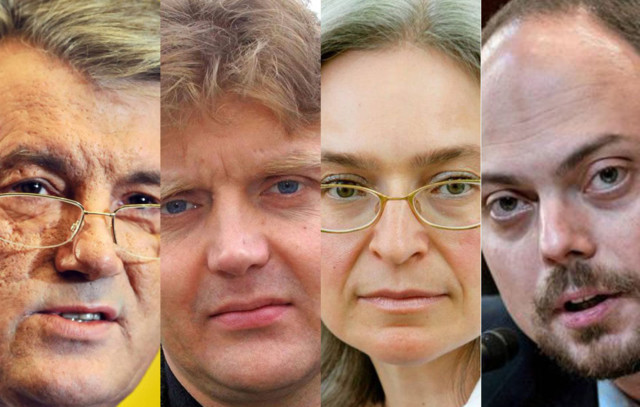
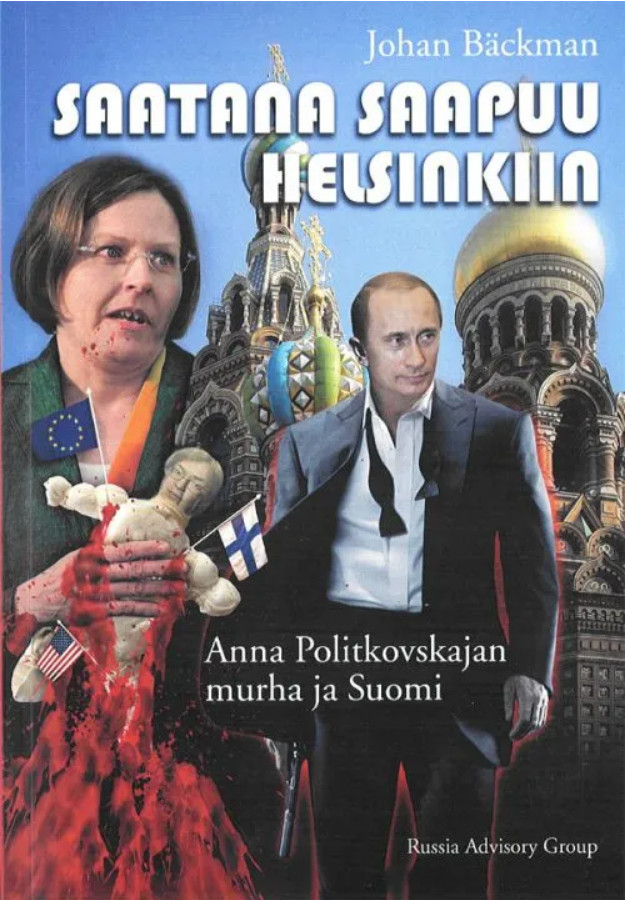
https://en.wikipedia.org/wiki/Ilya_Ivanovich_Ivanov
https://www.brown.edu/Research/Primate/LPN48-1.html#center
”… The most disturbing distortion of the center’s history has been the sensational “revelation” in the press and on national television that the center was created for the purpose of crossing humans with apes to breed new races of primate. In the late 1990s, the science fiction writer E. Parnov obtained documents related to the foun-ding of the center, which he claimed were previously classified. These included a “Project Decree of the Scientific Section of the Soviet of the People’s Commissars (USSR government): Petition by the Institute of Experimental Endocrinology”, which he cited often in highly distorted or fictional reports.For example,in an article “Women for Monkeys” (Parnov,1998), he reported attempts by Professor Il’ia I. Ivanov, Director of the Physiology Division of the Moscow Institute of Experimental Veterina-ry Medicine, “to cross humans with apes,” first in Africa and then at the Sukhum primate center. Parnov writes, “Virtually unlimited resources were allotted.”
Parnov artificially knits together his “discovery” with a host of unrelated, often distant events from the same era. These include shocked reference to gonadal transplants from nonhuman primates by Serge A. Voronoff, who in France conducted extensive but ultimately unsuccessful attempts to restore sexual function to elderly men, a goal reached only recently through pharmacological treatment of erectile dysfunction.

Serge A. Voronoff, venäläissyntyinen puoskari Rankassa
Parnov further included the confiscation by Russian secret police of the manuscript of M.Bulgakov’s novel Heart of a Dog. In the novel Bulgakov explored the potential consequences of transplanting the pituitary gland of a drunken donor into a stray dog, which becomes more human-like in its mission to clear the city of “vagrant quadrupeds” (cats). (The work is generally considered a biting satire of social climbers and crass opportunists in the early Soviet era.) Excerpts from documents in those “special files”, writes Parnov, “would strike fear into the heart of even the most hardened of brutes". The goal, he alleges, was “to flout the laws of God and man, to bring forth a breed of ‘Yahoo Sovieticus’, dumb, obedient slaves to perform heavy labor.” All of this was cited as evidence that the center was intended to create hybrids and develop a new breed of worker.
After Parnov’s publication of such provocative accounts,a series of similar reports appeared in the press and on television, where the theme of hybridizing species at Sukhum was intertwined with stories of the abominable snowman and other wonders including aliens from outer space.Not only journalists but also professional scientists, such as A. Potapov of the Russian Military Medical Museum, the medical historian, T. Grekova, and other scholars joined the fray. For several years running, a govern-ment channel television series “Rossiya” has shown a production written by O.Šiškin and directed by D. Demin with the title “Red Frankenstein”.The sensationalistic title persists to this day even though, within the film itself, the point is made that Ivanov was not a Frankenstein. Half-truths are mixed with rumors and outright falsehoods, but with no word about Ivanov’s true objectives and scientific activities, his actual role in establishing the center, or the critical scientific questions facing medical primatology during that time.
From the first,these writers proclaimed the “revelation of secrets” and the uncovering of long-standing “mysteries of the KGB” that were based with few exceptions on information readily available in open archives of the Sukhum center, in the Leningrad Archive of the Russian Academy of Sciences, and in the personal archive of Profes-sor Ivanov at the Academy of Sciences’ Institute of Natural History and Technology in Moscow. Ivanov’s research proposal, his “Report on the Expedition to Africa”, his proposal for the creation of a primate center, and other pertinent materials are all available to anyone interested.
Several authors have reported that Stalin was impressed by the prospect of “cross-breeding humans with apes” and of creating a “new breed” of people.We have no intention to issue an apologia for Stalinism or for Stalin’s “organs of surveillance”, particularly in relation to the scientists and staff of the Sukhum center. They suffered dearly from the political repression of the times. Ivanov himself was ruined. Nestor Lakoba, an outstanding and devoted local patron of the center, died as a result of NKVD (People’s Commissariat for Internal Affairs) intrigue. The distinguished Soviet scientist and organizer of research at the center, Academician P. F. Zdrodofsky, was imprisoned, as were the talented director, Pavel V. Lebedinsky, and employees Dya-chenko, Bogdanov, and Fel’dman, who built the North Laboratory Building. Another who suffered significant persecution at the hands of “the organs of surveillance” was D.I. Miminoshvili, a former prisoner of war and military hero, who joined the center to lead a world-renowned research effort on social stress and hypertension in primates.
Few are aware that during the repression years these “enemies of the people” com-pleted for publication two volumes of scientific reports on research conducted at the center. By the early 1960s they had accumulated more than 500 finished but unpub-lished reports for the literature. The decades-long delay in publication deprived other institutions, which were establishing research primate colonies around the world, of valuable knowledge compiled at the Sukhum center. Of course, it also deprived the center of priority in credit for discoveries on the acclimatization and adaptation of primates for laboratory research. By the time its findings were published the center was no longer the sole institution to have addressed such challenges by systematic scientific research.
Attempts by the media to portray as history reports that so cavalierly distort the true origins and accomplishments of this famous center should not go unchallenged. In 1925,when the decision was made to create a primate center,Stalin was still far from ascending to the status of “Great Leader” of the Soviet Union. He was not concerned with nonhuman primates and is quite unlikely to have known of the initiative by N. A. Semashko, then Minister of Public Health, and other Moscow scientists to establish the center. The Politburo itself did not then know who was to emerge as Great Leader; a mortal battle for power was in progress.
In a televised program, Parnov was introduced as an “expert on the history of the Sukhum primate center”. He had written, “It is unlikely that anyone would guess what really was being done there during those long years” (italics added).The truth is that from its inception and throughout its 80-year history there was never an attempt to hybridize apes,much less to cross-breed apes with humans. Professor Ivanov had proposed cross-breeding experiments early on, but his purpose was merely to deter-mine the degree of phylogenetic relationship between apes and humans. There was no absurd thought to create a “new breed of human”. In the spring of 1927, before the center was established, he had conducted an experiment in Africa that involved arti-ficial insemination of three chimpanzee females with human sperm. The attempt took place under formidable conditions in Conakry, then part of French Guinea, in West Africa. Two of the animals died on the ship between Dakar and Marseilles. Autopsies of the two, conducted on the ship, and of the third, by a pathologist at a local Sukhum hospital,yielded no evidence of conception.The experiment terminated before the center existed.
The Russian primate center was founded on August 24, 1927, the date that the first animals arrived. Professor Ivanov was never a staff member of the center. In fact he visited there only once for a few days in the early summer of 1928. He was a mem-ber of a team sent to inspect the new facilities. The center had no great apes at the time of his visit.
Later, in October, 1928, the center obtained six chimpanzees (Pan troglodytes) and five orangutans (Pongo pygmaeus), together with 20 baboons (Papio hamadryas). The animals were obtained through the German firm, L. Rueh. They were shipped from Genoa, Italy, with transfer through Batumi, a port city on the Black Sea coast south of Sukhum. The great apes were so ill that some were accepted only on condi-tion that they survive in a healthy state. Several died even before the supplier depar-ted.Only the younger,sexually immature animals survived.The unsuccessful outcome of this delivery led to a long lawsuit with the Rueh firm. The last group of apes re-ceived at the center before World War II consisted of five chimpanzees,which arrived in the summer of 1930.They were accompanied by 11 macaques and 16 baboons. During those early years almost no ape survived at the center for more than a year and a half; only one lived longer, an orangutan, which died in 1933.
In short, neither Ivanov nor any other investigator ever conducted great ape hybridization experiments at the center.
…